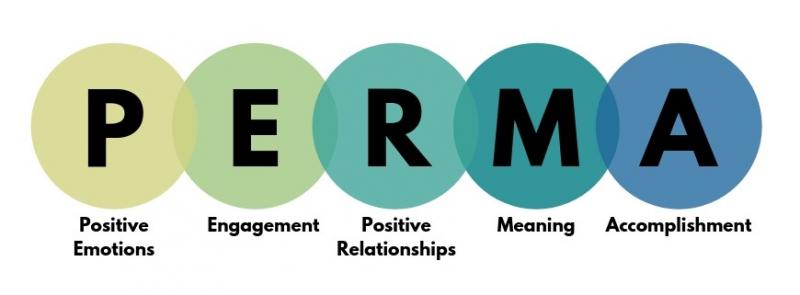Education professionals are reporting high levels of work-related stress. Nicola Harvey explains how the PERMA approach can nurture a sense of wellbeing, fulfilment and purpose.

After a well-deserved summer break, education professionals in England, have returned to the classroom. While everyone adapts to a ‘new normal’ and transitions into school routines, the legacy of the COVID-19 pandemic and events over the summer will continue to have an impact on student and staff wellbeing.
According to a study from Education Support and YouGov in 2023, 84% of teachers and 89% of senior leaders reported high levels of work-related stress during the pandemic.
Respondents also mentioned higher levels of depression, resulting in a lack of sleep, difficulties when concentrating, overwhelm and tearfulness.
In a further study conducted by NASUWT-The Teachers’ Union, 27% teachers shared that they needed to see a doctor or medical professional to help with their mental and physical health as a result of the pandemic.
Considering the statistics, 27% is a relatively small number of educators openly sharing that they asked for professional support, which may also highlight the associated stigmas connected to teachers asking for help, as reported in the Teacher Wellbeing Index 2023.
Early intervention and greater understanding of staff mental health in supportive environments needs to be in place to reduce teacher burnout and support wellbeing.
The PERMA model of wellbeing was created by psychologist Martin Seligman to help people thrive and flourish, instilling a sense of fulfilment, meaning and purpose in their lives.

The five core elements of PERMA are:
Research shows that, when all elements of the model are used consistently, improvements are made to physical health, vitality, job satisfaction, life satisfaction and commitment within organisations (Alder et al., 2014).
While teachers cannot be happy 100% of the time, particularly in busy school environments, it’s important to connect with people, places and things that ignite a sense of hope, compassion, interest, joy, amusement, love, pride, ease, and gratitude.
Positive emotion is about observing what makes a teacher feel uplifted and at ease from within. This might involve accepting past events, such as during the pandemic, which may not have gone to plan and having an open mind about what the future may hold.
Here are some ways to build positive emotion and improve wellbeing.
Seligman describes engagement in PERMA as ‘being one with the music’. It’s about becoming so engrossed in an activity that you lose sense of time.
Building upon the positive emotion described above, engagement encourages teachers to find activities related to their passions, values and interests, and then wholeheartedly pursue them.
Here are some ways to increase engagement and improve wellbeing.
Seligman describes relationships in PERMA as the notion of feeling supported, loved, and valued. As social beings, we are hardwired for love, affection, attention and interaction.
Often unknowingly, teachers form networks within the school community to support their physical, mental and emotional health and wellbeing in schools.
The relationships formed inside and outside school are key, particularly when celebrating achievements or expressing the need for emotional support. The sense of connectedness and need for belonging in relationships increases intimacy and wellbeing.
Here are some ways to build relationships and improve wellbeing.
Seligman notes having a sense of meaning is about aligning with personal values to serve something greater than ourselves.
People who report having meaning, or a purpose in life, tend to live longer, and have greater life satisfaction and fewer health problems (Breen et al., 2009).
Simply put, having a sense of purpose helps us focus on what is really important, particularly on tough days at school when teachers need a glimmer of hope that everything is going to work out okay.
Here are some ways to build meaning and improve wellbeing.
The last element of PERMA is accomplishment, also known as achievement, mastery or competence.
Seeing the outcome of a completed goal or project into which you’ve invested your time, energy and motivation can bring about a sense of happiness and fulfilment.
All too often teachers celebrate their students’ achievements but forget to do this for themselves.
Seligman notes that when we achieve intrinsic goals, it can increase self-esteem, boost confidence and a sense of pride.
Here are some ways to build accomplishment and improve wellbeing.
To summarise, the PERMA wellbeing model encourages teaching staff to focus on living more meaningfully, connect with a supportive community, take part in activities to feel good, accomplish intrinsic goals and allow themselves to be fully engaged with life.
Schools also have the opportunity embed elements of PERMA into their wellbeing policy, to create a supportive and nurturing environment for the whole school community.